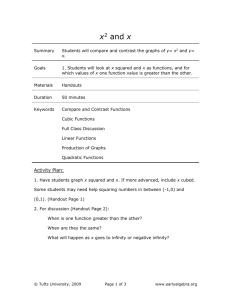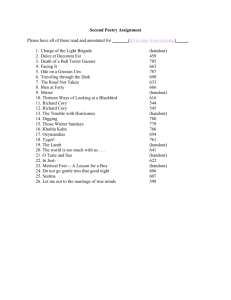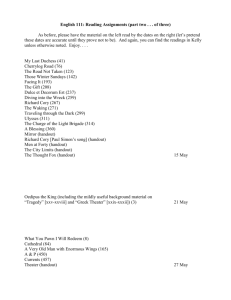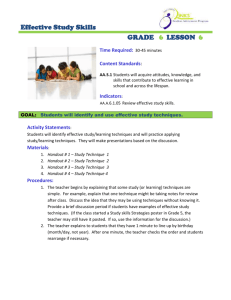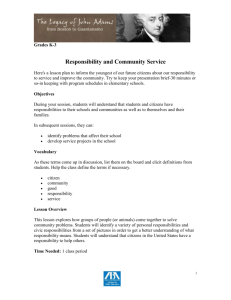Lab Report Example - Solon City Schools
advertisement
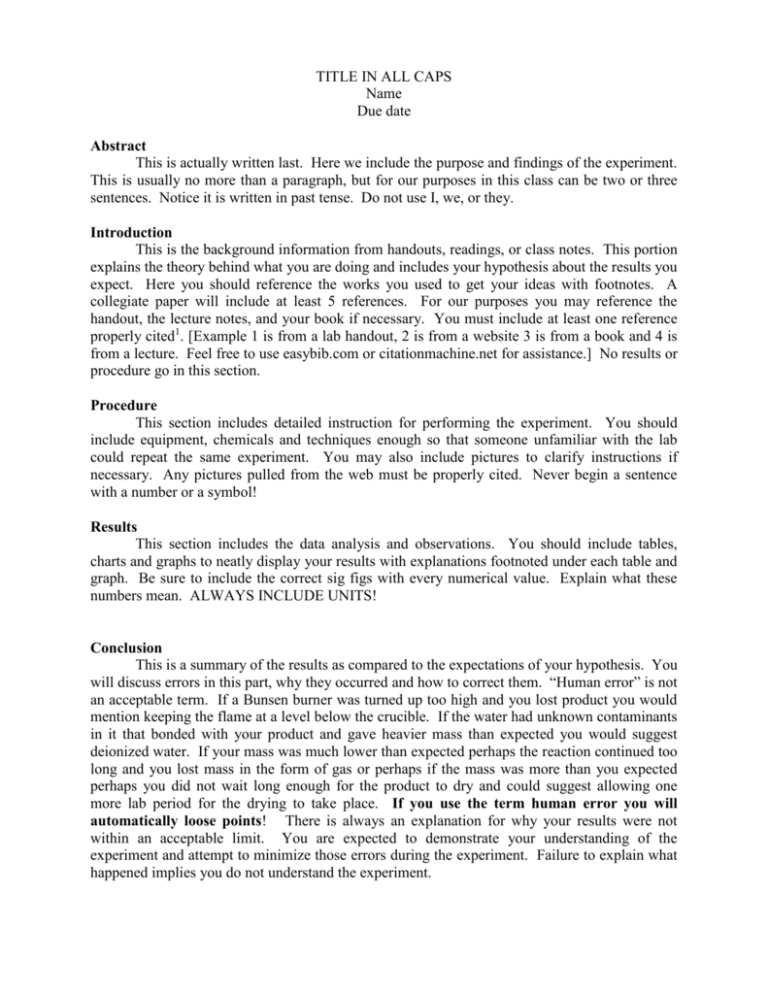
TITLE IN ALL CAPS Name Due date Abstract This is actually written last. Here we include the purpose and findings of the experiment. This is usually no more than a paragraph, but for our purposes in this class can be two or three sentences. Notice it is written in past tense. Do not use I, we, or they. Introduction This is the background information from handouts, readings, or class notes. This portion explains the theory behind what you are doing and includes your hypothesis about the results you expect. Here you should reference the works you used to get your ideas with footnotes. A collegiate paper will include at least 5 references. For our purposes you may reference the handout, the lecture notes, and your book if necessary. You must include at least one reference properly cited1. [Example 1 is from a lab handout, 2 is from a website 3 is from a book and 4 is from a lecture. Feel free to use easybib.com or citationmachine.net for assistance.] No results or procedure go in this section. Procedure This section includes detailed instruction for performing the experiment. You should include equipment, chemicals and techniques enough so that someone unfamiliar with the lab could repeat the same experiment. You may also include pictures to clarify instructions if necessary. Any pictures pulled from the web must be properly cited. Never begin a sentence with a number or a symbol! Results This section includes the data analysis and observations. You should include tables, charts and graphs to neatly display your results with explanations footnoted under each table and graph. Be sure to include the correct sig figs with every numerical value. Explain what these numbers mean. ALWAYS INCLUDE UNITS! Conclusion This is a summary of the results as compared to the expectations of your hypothesis. You will discuss errors in this part, why they occurred and how to correct them. “Human error” is not an acceptable term. If a Bunsen burner was turned up too high and you lost product you would mention keeping the flame at a level below the crucible. If the water had unknown contaminants in it that bonded with your product and gave heavier mass than expected you would suggest deionized water. If your mass was much lower than expected perhaps the reaction continued too long and you lost mass in the form of gas or perhaps if the mass was more than you expected perhaps you did not wait long enough for the product to dry and could suggest allowing one more lab period for the drying to take place. If you use the term human error you will automatically loose points! There is always an explanation for why your results were not within an acceptable limit. You are expected to demonstrate your understanding of the experiment and attempt to minimize those errors during the experiment. Failure to explain what happened implies you do not understand the experiment. References: 1 . B o yd , K . T h e r m o d y n a m i c s o f t h e Cu/Cu2+ - Zn/Zn2 Cell, Physical Chemistry Lab Handout Fall 2007. 2 . "Electrolysis | Tutorvista.com." Tutorvista.com - Online Tutoring, Homework Help for Math, Science, English from Best Online Tutor. Web. 13 Feb. 2011. <http://www.tutorvista.com/content/chemistry/chemistry-iii/redoxreactions/electrolysis.php>. 3. Stuart, Martin. Principles of General Ch emistry. McGraw Hill, 2007. Print. 4. Tang, Maureen. "Electrochemical T h e r m o d yn a m i c s . " U n i v e r s i t y, B e r k l e y , C A . J a n u a r y 2 8 , 2 0 1 0 . L e c t u r e . Berkley Formatting Your paper should be double spaced with justified margins and in T i m e s N e w R o m a n u s i n g s i z e 1 2 t yp e s e t . H e a d i n g s s h o u l d b e i n b o l d a n d subheadings should be indented. All graphs and tables need to be labeled with a title and a description of what the item is telling. Spelling and grammatical errors should be minimal. Even though your data will be s i m i l a r yo u r r e p o r t s h o u l d d i f f e r f r o m yo u r p a r t n e r s . W o r k s e p a r a t e l y a n d do not copy each other’s work.


